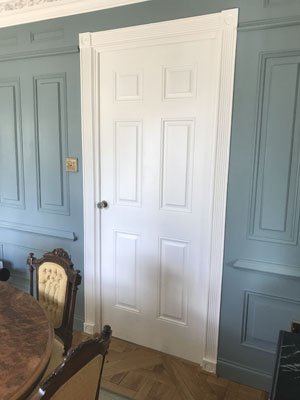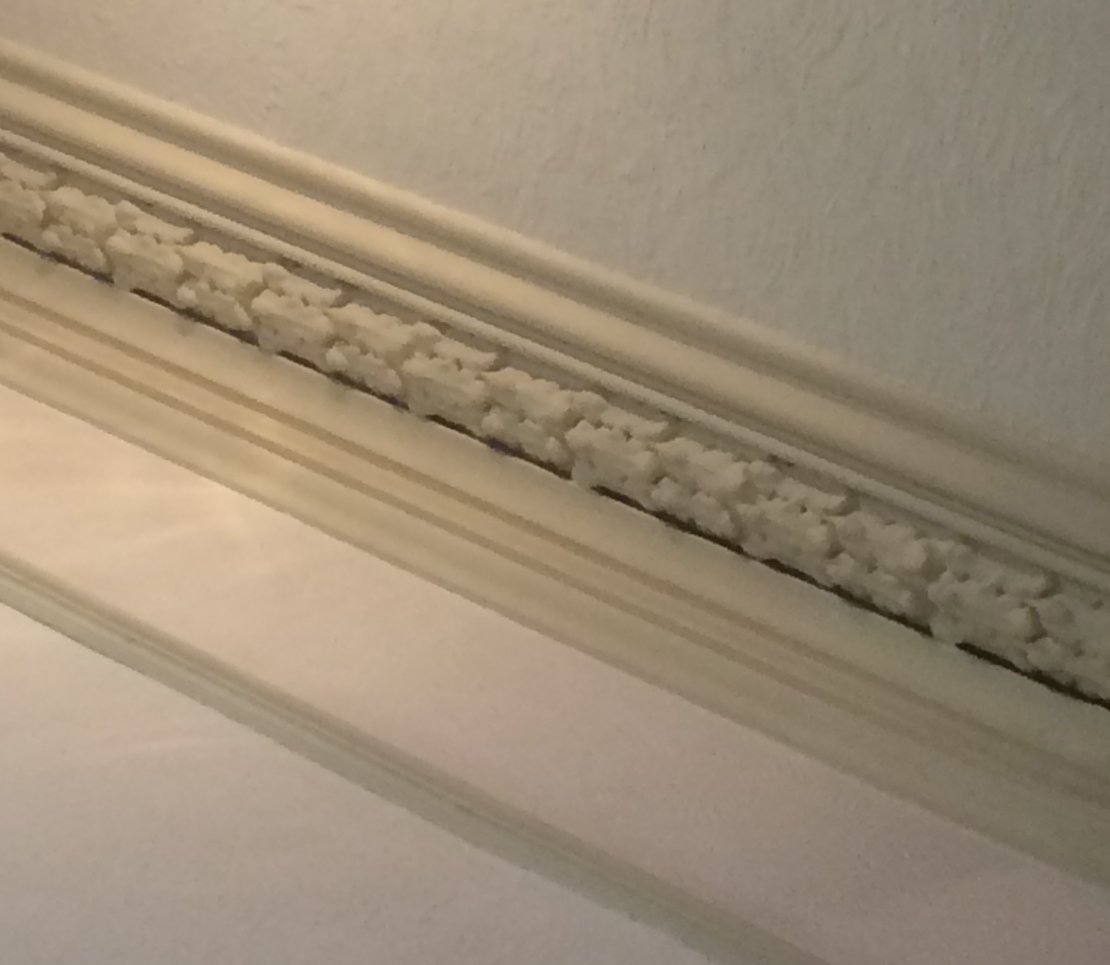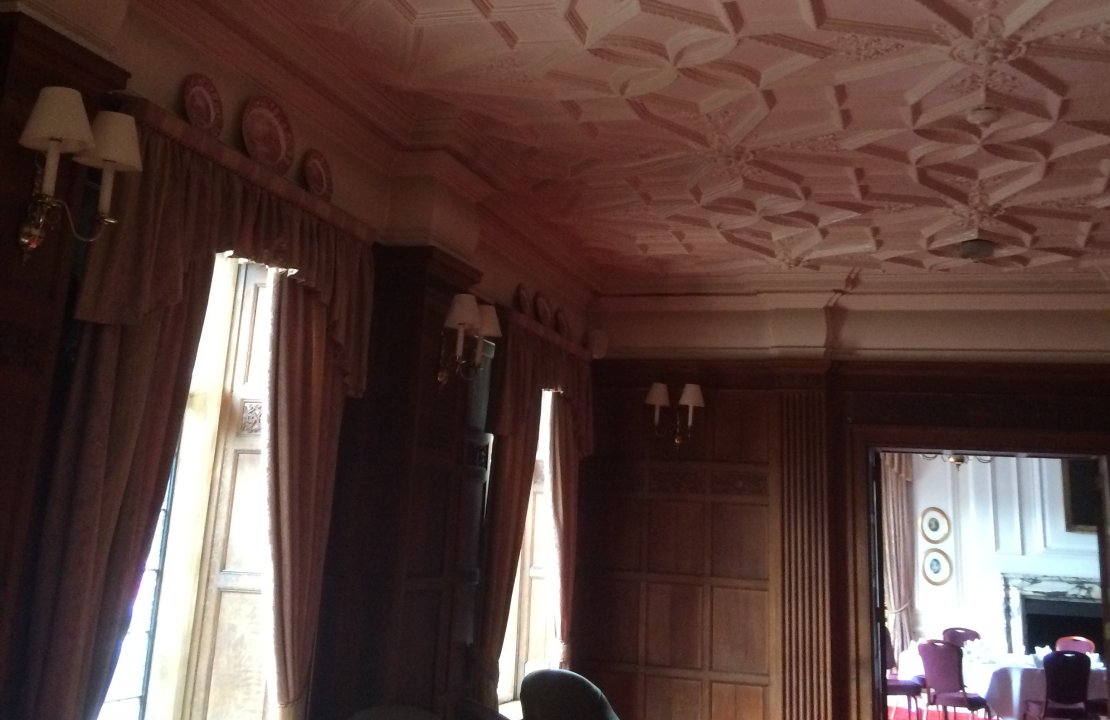The typical Victorian reception room would feature the following mouldings: architraves, skirting, dado, picture rail, coving, a ceiling rose and possibly panelling, each with it’s own unique function within the room:

Skirting – saves walls from knocks from shoes, mops, brooms and vacuum cleaners
Dado – saves walls from the back of chairs; not originally present in bedrooms, kitchens, bathrooms, where no chairs were used.
Victorian architraves - surrounds the doors and windows and makes the transition between the room and the window opening more attractive.
Victorian coving – this covers the join between the ceiling and the wall
Picture rail mouldings – used to hang pictures
Ceiling rose – although this was originally useful for catching the soot from gas lamps before it dirtied a whole ceiling, nowadays it is most useful for hiding the wiring from a central chandelier.
Panelling - provides a robust attractive finish on walls that may need plastering or are damp.
If you are extending your house or integrating outbuildings into the house, you need to ensure that the mouldings you use roughly match those used in the rest of your house to make the old and the new parts of your house barely distinguishable which can really help sell your house for the best price.

Choose appropriate mouldings for your room
In a large room with tall ceilings use large mouldings. Anything small will look dwarfed by the dimensions of the room. If replacing damaged coving, it will make life easier to replace with a coving that is slightly larger than the original so as to not see the marks left by the coving that has been taken off. The same rules apply for ceiling roses – if you replace one that has been removed with a slightly larger style, you won’t have to replaster the ceiling.
For wooden mouldings, the same types of scars won’t be left other than screw holes so this rule does not apply. However, the original sizes of mouldings that were present in your room will probably still provide a good guide to the most appropriate sizes to be used.
You need to make sure that all mouldings are in proportion to each other. Choose large, medium or small mouldings: if you have a room with ceilings at 3.1 metres high that is 7 x 8 metres in size, it can take a really large impressive coving, dado and high skirting. However, if you live in a terraced house with small rooms, you’d want to go with smaller variants of each. Something sure to irritate you for years is a narrow staircase with a large dado rail preventing furniture from being taken easily up and down the stairs.
What’s the right size ceiling rose for my room?
When to repair and when to replace
How do I choose the right style of mouldings for my home?
If you live in a very grand house with very high ceilings, the best-suited coving would be large and ornate, for example, acanthus leaf, egg and dart or dentil coving. Look for the right style of Victorian architrave for your home with lots of curves, a large dado and a tall skirting board. Victorian houses mostly have high ceilings so if you install very small mouldings, it will just look odd and the cost saving is not significant.
Other wooden mouldings such as pilasters, corbels and wooden rather than plaster coving are often used in kitchens to elevate run of the mill kitchen cabinets to something really special. Corbels usually used to support (or to appear to support) mantels either side of a kitchen range. Pilasters are used on the corner of kitchen islands or between kitchen units to again add some interest and detail. They are also useful if the length of the kitchen does not perfectly equate to an exact number of kitchen units as they can fill any gaps left in a decorative way. Wooden coving around the top of kitchen units makes the kitchen design appear finished and adds some height in rooms with high ceilings where there would be a large gap between the top of the kitchen units and the ceiling. This saves lowering any ceilings.
Paint colours for mouldings and walls
Mouldings are most usually painted in a colour lighter than the walls to help them stand out. The more contrast between the mouldings paint colour to the walls, the more these will stand out from each other. Therefore the colours you choose will be dictated by whether you wish to make a statement with your mouldings or not.
Panelling looks its best (in our opinion) either left as a deep dark oak colour (or stained), painted in a dark blue or grey or even painted in an off white. If you have lots of light in your room or wish to make this room atmospheric, such as a library or snug, a dark colour will work perfectly, and the highly polished oak finish best of all.

Be the first to add a comment...